Solidi in China and Monetary Culture along the Silk Road
Lin Ying 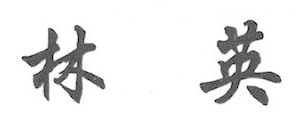
Zhongshan University, Guangzhou, China 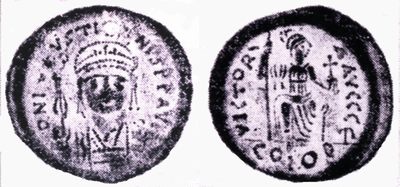
Fig. 1. Solidus of Justin II unearthed at Dizhangwan.
n the summer of 1953, a group of archaeologists from the Shanxi Institute of Historical Relics and Archaeology arrived at Dizangwan, a small village near Xianyang city, where they excavated the tomb of Dugu Luo (534-599), a high official in the Sui period (581-618). The yellow soil yielded a small gold coin [Fig. 1], quite different in appearance from ancient Chinese coins [Fig. 2]. When it was sent to Beijing the following year to display in a national exhibition of newly discovered artifacts, the noted archaeologist and historian Xia Nai identified it as a solidus of Byzantine emperor Justin II (565- 578). Although some evidence of Byzantine coins and their imitations had been unearthed in Xinjiang in the late nineteenth and early twentieth centuries [Thierry and Morrisson 1994, pp. 110-111], the discovery in 1953 was the first such in central China. Since the discovery of that solidus of Justin II nearly fifty Byzantine gold coins and their imitations have been recovered or collected in China. They are distributed from Liaoning, across Inner Mongolia, Shanxi, Gansu, Henan and Hebei provinces, to Xinjiang, roughly forming a crescent in north China [Fig. 3]. Except for one gold coin from a seventh-century hoard, the others are all from tombs. The tomb occupants who once owned these gold coins were of various social classes, ranging from a princess of the Rouran (Juan-Juan) qaghanate and leader of the Central Asian immigrant community to a small landlord or wealthy citizen. Their chronology concentrates in the period of Northern Dynasties, the Sui and early Tang, i.e. from the late sixth century to the first half of the eighth century. These Byzantine gold coins have already raised a series of questions deserving further exploration. Under what circumstances were they sent from Constantinople? Who carried them to the Far East and for what purpose? How did the contemporary Chinese treat these exotics?
From 1959 to 1977 Xia Nai published on these finds three articles in which he examined the chronology and epigraphy of these coins and discussed their significance for studying Byzantine relations with China in the early middle ages [Xia Nai 1959; 1961; 1977]. In 1988, the Japanese scholar Otani Nakao examined for Central Asia and China the burial custom of the obolus, that is, the coin in the mouth of the deceased [Otani Nakao 1990]. Whereas Xia Nai had concluded that the burial custom of the obolus, which prevailed from the Han to the Tang periods in Turfan, Xinjiang, had originated in inner China, Otani argued that it came from Central Asia. The discussion of these coins continued in the 1990s when François Thierry and Cecile Morrisson published a detailed catalogue of 27 specimens of solidi and their imitations so far unearthed in China [Thierry and Morrisson 1994]. In contrast to the thousands of Sasanian silver coins excavated in China, the finds of Byzantine gold coins are limited. Given this fact, they concluded that the presence of the solidus in China might not indicate a direct and frequent connection between the Byzantine Empire and China, but instead an uncertain relationship. Since their article of 1994, additional Byzantine coins and studies of them have been published in Chinese, among them the monograph by the present author [Lin Ying 2004].
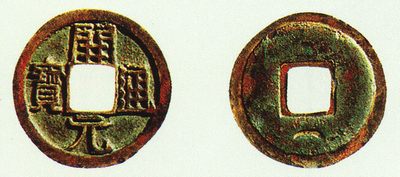
Fig. 2. Kaiyuan tongbao, Chinese copper coin of the Tang period.
In general, before the 1980s, most scholars considered these finds as evidence for the frequent connection between Byzantium and China, which could further be associated with the seven visits of Fulin (Rum) emissaries recorded in Tang literature. After the 1980s, more and more researchers tended to connect these gold coins not with official embassies but rather with the prosperous international trade along Silk Road. In their opinion, it was possibly Sogdians, rather than Byzantines, who carried these coins to China in exchange for silk. Clearly the finds in China are not isolated and can be connected with the events along the Silk Road in early medieval times. The route by which they traveled to China began in the Byzantine Empire. However, it is only by examining the various intermediate links between Constantinople and Chang’an that one can sort out the channels for the eastward flow of solidi and thus understand the role of solidi and their imitations in China.
According to the scholarship so far published, the Byzantine gold coins and
their imitations in China fall roughly into three categories:
(1) official solidi struck in Constantinople, bearing clear images and legends
and weighing 4.5 grams;
(2) imitations of solidi resembling the real ones in weight and image, whose
prototypes thus can be established;
(3) gold bracteates, struck on a very thin flan (unstamped metal disk) or with
only one die, weighing less than 2 grams, and unlikely to have had a monetary
function.
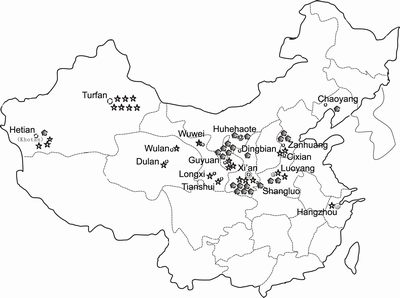
Fig. 3. Map showing geographical distribution of Byzantine gold
coins across northern China. © Lin Ying.
The first group of coins, i.e. official solidi, were all buried in graves from 575 CE (the seventh year of the Wuping period, Northern Qi Dynasty) to 621 CE (the fourth year of the Wude period, Tang Dynasty). Each grave contains more than one solidus, the greatest number so far recovered being the five specimens found in the tomb of Tian Hong [Fig. 4; see also Juliano and Lerner 2001, pp. 282-285]. The owners of these coins were either the emperor’s trusted officials or relatives of the royal family. Furthermore, the fact that most of the finds are in tombs located in the contemporary political center indicates that Byzantine gold coins had entered the heartland of China from the mid-sixth century to the early seventh century. It is possible that the qaghans of the Rouran and Turks obtained these solidi as diplomatic gifts from Roman caesars and then sent them to Chinese emperors to show the hegemony of steppe people in Eurasia.
The imitations of solidi in the second group embrace a variety of specimens. The initial discoveries of such were by Sven Hedin in Khotan in 1896 [Montell 1938, pp. 94-95] and by Aurel Stein in the Astana Cemetary in the Turfan region in 1915, where the two examples were used as oboli in the mouths of the deceased [Stein 1916, p. 205; Thierry and Morrission 1994, p. 111; Wang 2002, pp. 72, 339; Wang 2004, p. 29, fig. 7]. The imitations range from the barbarized rough imitations that follow the official solidi in weight and size to counterfeits that look quite “real” but can be easily recognized by their reduced weight and diameter [Fig. 5]. These finds have raised most interesting questions about the craftsmanship and usage. In order to answer these questions, they need to be compared with similar finds along the entire Silk Road, from Central Asia, the western steppe, and the eastern Mediterranean.
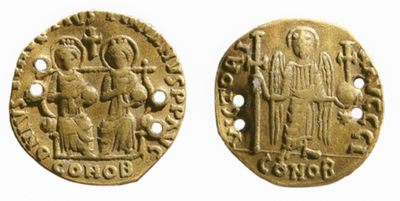
Fig. 4. Gold solidus of Justin I and Justinian II, 527 CE, found in
tomb
of Tian Hong (d. 575) at Guyuan. Photograph © Luo Feng, used
with permission.
The bracteates of the third group date from the mid-sixth century to the mid-eighth century (from late Northern Qi to the mid-Tang). Hedin found two in Khotan and Stein one at Astana [British Museum n.d.], which is also the location of several other such finds. Indeed, most of the bracteates have been discovered in Turfan tombs in Xinjiang and in the graveyard of the Shi family in Guyuan, Ningxia province [Fig. 6; see also Juliano and Lerner, 2001, pp. 287-288]. They are similar to the bracteates from Sogdiana in weight, size and type [Naymark, 2001, pp. 99-120; Lin Ying, 2003b]. Moreover, most of the tomb occupants in China proper seem to have had a close relationship with Sogdians. Some coins are directly from the tombs of Sogdian descendants, while others were unearthed in the areas where there were flourishing Sogdian communities in the Tang period. Possibly the Sogdians in their mercantile context treated coins in a way different from the Chinese. As a result, Sogdian descendants in China, though having lived for generations in an agricultural society, still demanded western gold coins to express their own concept of a prosperous life. The seventh century witnessed the zenith of Sogdian culture in its homeland and was a time of increasing knowledge and admiration of Byzantium in Sogdiana. This could have caused the Sogdians to imitate the solidus for decorative purposes and funeral offerings. It is interesting to note that Sogdians may have based their imaginative depictions of a Roman Caesar on the representation of the Byzantine emperor on the solidus. This Sogdian version of a Byzantine ruler’s portrait also left its traces in Chinese sources of the Tang period.
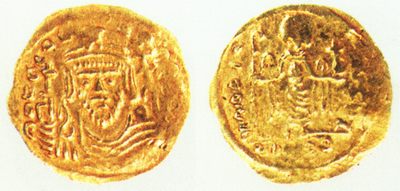
Fig. 5. Imitation of a solidus of Leo I, found in Huangzhou.
If the official solidi were carried into China as diplomatic presents and the bracteates imitating solidi were used for burial offerings by Sogdians, how then did people in the Far East respond to these small “gold pieces” over a thousand years ago? What idea did they convey to the Chinese people at that time?
It is notable that most of the gold coins are pierced once or twice, indicating that they were once used as pendants of a necklace or sewn onto clothing [Fig.4 above]. The locations of the small holes indicate that owners of these coins wanted to show the viewer the obverse, i.e. the frontal side depicting the Byzantine emperor .
The portrait of the ruler on western coins had already been noticed by Chinese as early as the Former Han period. Shiji, the first standard history written ca. 100 BCE by Sima Qian, records:
An-xi [the Parthian Empire] is thousands of li to the west of Da-rou-zhi [the Great Yuezhi— Bactria]…Silver coins are used in this country and bear the portrait of the ruling king. After the death of king, the coins are re-minted in order to depict the portrait of the new king [Fig. 7] [author’s tr., modified with ref. to Watson 1993, Vol. II, p. 235].
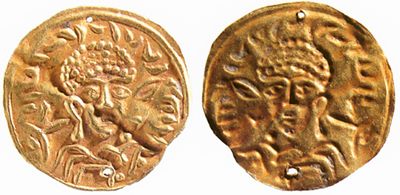
Fig. 6. Gold bracteate (imitation of a Byzantine solidus), found in
tomb
of Shi Suoyan (d. 656; buried 664), near Guyuan.
Photograph © Luo Yeng, used with permission.
The images on the coins from Xiyu (the Western Region, a term generally denoting countries west of Ancient China) continued to arouse interest in China in succeeding periods. For example, the Jiu Tangshu, the standard history of Tang written in the tenth century, describes coin from Nepala (today, Nepal):
The state of Nepala is in the west of Tibet…They use copper coins. The frontal image of the coin is a human figure, while the image on the back side depicts a horse or cattle. The coin is not pierced [on the central field like Chinese coin].
Down to the eleventh century, the account of western coins can also be seen in the official history:
The coin of Fulin [possibly referring to the Byzantine Empire or the principality established by the Seljuk Turks] is made of gold and silver. The coin is not pierced [on the central field]. On the frontal side is carved the image of Mile Buddha [possibly a misunderstanding for a picture of Jesus]. On the back side is carved the name of the king. The common people are strictly prohibited by law to produce coins.
Thus many Chinese notes about the image of western coins remind us of the story which was widely known along the Silk Road concerning four heavenly sons, understood to be the emperors who ruled the world together. The East was ruled by the emperor of China, the country of human beings; the South was ruled by emperor of India, the country of elephants; the North was ruled by emperor of steppe empires, the country of horses; finally, the West was ruled by Roman or Persian emperors, whose dominions were the country of treasures. The earliest Chinese version is found in Kang Tai’s Waiguo zhuan (accounts of foreign countries, written in the third century CE). Down to the seventh century, the story was repeated in the travel notes of Buddhist monks, such as Xuanzang’s Datang xiyu ji (an account of the Western Region of great Tang, written in 646 CE) and Daoxuan’s Shijia fangzhi (a Buddhist gazetteer, written in 658 CE). According to Tang Chinese sources, the images of the four heavenly sons were also depicted on the palace mural of Kushania, a kingdom in Sogdiana. Later, the Arab geographers of the ninth and tenth centuries re-told the story in a way that reflected the political and cultural realities of their times.
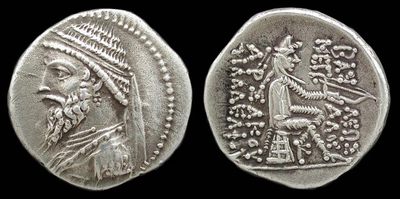
Fig. 7. Silver drachm of Parthian ruler Artabanus I (ca. 127-124 BCE).
Photograph © Bob Rives, used with permission. For an extensive
selection of Parthian coins, visit
http://www.parthia.com/parthia_coins_parthia.htm
.
It is interesting to note that the images of four heavenly sons can also be connected with the coins recovered along the Silk Road. During the first century CE when the Kushans extended their control to the Ganges River and came under the influence of Indian culture, Kushan gold coins represented the king sitting on an elephant [see for example Fitzwilliam Museum n.d.]. Both in Kushan times and later, when the Turks established their hegemony over the Eurasian steppe and Central Asia in the seventh century, the image of a horse appeared on Central Asian coins, in the latter examples being featured on the obverse [Coins of Central Asia n.d., “South Sogdiana” SS5-SS7]. Therefore, it seems likely that Byzantine coins in early medieval China, with their image of the Roman caesar, conveyed to Chinese people the image of the emperor of the treasure country in the West.
Clearly, coins along Silk Road were not only currency for longdistance trade but also instruments for political propaganda when they bore the image of a ruler. They thus became an expression of different cultures. From Constantinople to Chang’an, people of different ethnic groups once read these coins in their own manner, adding new content to them, and then transferred the coins and new explanations to the next location along the Silk Road. In this sense, solidi, the gold coins from Byzantium, connect a cluster of stories set in the Eurasian steppe and oasis caravan cities in Central Asia. A thousand years later, it is through these coins that we have an opportunity to relive the past prosperity along Silk Road and understand patterns of cultural exchange.
About the Author
Lin Ying is Associate Professor in the Department of History, Zhongshan (Sun Yat-sen) University, at Guangzhou, China. Her dissertation, “Fulin, the Ruler of Treasure Country: Byzantium and China in the Tang Period (618-907),” examines how Byzantine culture flowed into the Tang Empire through nomadic people and Central Asian merchants along the Silk Road. She is interested in the eastward spread of Roman and Byzantine cultures through land and maritime routes in the pre-Islamic period. She may be contacted at hssliny@zsu.edu.cn .
References
- Alram 2001
Michael Alram. “Coins and the Silk Road.” In Juliano and Lerner 2001, pp. 271-291. Includes descriptive catalogue of coins. - British Museum n.d.
“Gold imitation of a Byzantine coin found in China” [=CM BM Stein, IA.XII.c.1]. Locate by entering “Byzantine Coins” into the “Compass” search index, http://www.thebritishmuseum.ac.uk/compass/index.html . - Cai Hongsheng 1998
Cai Hongsheng. Tangdai jiuxinghu yu tujue wenhua [Sogdians and Turks in the Tang period]. Beijing, 1998. - Coins of Central Asia n.d.
“Coins of Central Asia” http://www.sogdcoins.narod.ru/english/index1.html - Fitzwilliam Museum n.d.
“Between East and West: Influence and Change in Coinage.” Image of gold stater of Kushan ruler Huvishka riding an elephant http://www-cm.fitzmuseum.cam.ac.uk/coins/eastwest/images/Alex_23_obv.gif. - Jiang Boqin 1996
Jiang Boqin. Dunhuang Tulufan wenshu yu Sichouzhilu [The Silk Road and Documents from Dunhuang and Turfan]. Beijing, 1994. - Juliano and Lerner 2001
Annette L. Juliano and Judith A. Lerner, eds. Monks and Merchants: Silk Road Treasures from Northwest China. Gansu and Ningxia, 4th-7th Century. New York: Abrams; Asia Society, 2001. - Lin Ying 2003a
Lin Ying. “Western Turks and Byzantine gold coins found in China.” Transoxiana, 6 (Junio 2003), online at http://www.transoxiana.com.ar/0106/lin-ying_turks_solidus.html. - Lin Ying 2003b
Lin Ying, “Sogdians and the Imitation of Byzantine Coins from the Heartland of China,” Eran ud Aneran: Studies presented to Boris Ilich Marshak on the Occasion of His 70th Birthday. Matteo Compareti, Paola Raffetta, Gianroberto Scarcia, eds. Online at http://www.transoxiana.org/Eran/Articles/lin_ying.html. - Lin Ying 2004
Lin Ying. Jinqian zhi lü: Cong Junshitandingbao dao Chang’an [Journey of solidi: from Constantinople to Chang’an]. Beijing, 2004. - Luo Feng 2004
Luo Feng. “Zhongguo jingnei faxian de Dongluoma jinbi [Byzantine gold coins found in China].” In Hanhan zhijian: sichouzhilu yu xibei lishi kaog [Between Hu and Han: Silk Road and the History and Archaeology in Northwest China]. Beijing, 2004, pp. 113-155. - Montell 1938
Gösta Montell. “Sven Hedin’s Archaeological Collections from Khotan, II.” Bulletin of the Museum of Far Eastern Antiquities (Ostasiatiska Samlingarna) Stockholm. No. 10 (1938): 83-113 and 10 plates. - Naymark 2001
Aleksandr Naymark. “Sogdiana, Its Christians and Byzantium: A Study of Artistic and Cultural Connections in Late Antiquity and Early Middle Ages.” Unpublished Ph.D. dissertation, Indiana University, 2001. - Otani Nakao 1990
Otani Nakao. “Guangyu sizhe kouzhong hanbi de xisu [The burial custom of placing coin in the mouth of the deceased].” Renwen zazhi, 73 (1991): 80-86; 81(1993): 81-87 (translation from article published in Japanese in Toyama Daigaku jinbu gakubu kiyô 13.1). - Pelliot 1923
Paul Pelliot. “La théorie des quatre fils du Ciel.” Toung Pao, 22 (1923): 97-125. - Stein 1916
Aurel Stein. “A Third Journey of Exploration in Central Asia, 1913- 1916.” The Geographical Journal, 48/3 (1916): 193-229. - Thierry and Morrisson 1994
François Thierry and Cecile Morrisson. “Sur les monnaies Byzantines trouvées en Chine.” Revue numismatique, 36 (1994): 109-145 and Pl. XVI. Note: Thierry and Morrisson mis-date the Hedin finds at Khotan to 1905; cf. Montell 1938: 94. - Wang 2002
Helen Kay Wang. “Money on the Silk Road: the evidence from Eastern Central Asia to c. AD 800.” Unpublished Ph.D. dissertation, University College, University of London, 2002. [also, published under the same title, London: British Museum Press, 2004]. - Wang 2004
Helen Wang. “How Much for a Camel? A New Understanding of Money on the Silk Road before AD 800.” In Susan Whitfield, ed. The Silk Road: Trade, Travel, War and Faith. Chicago: Serindia, 2004, pp. 24-33. - Watson 1993
Burton Watson, tr. Records of the Grand Historian, by Sima Qian. 2 vols., rev. ed. New York: Columbia University Press, 1993. - Xia Nai 1959
Xia Nai. “Xianyang Dizhangwan Suimu chutu de Dongluoma jinbi [The Byzantine Solidus Found in the Sui Tomb at Dizhangwan, Xianyang].” Kaogu xuebao, 25 (1959): 67-73. - Xia Nai 1961
Xia Nai. “Xi’an tumencun chutu de Baizhanting jinbi” [The Byzantine Solidus Found in Tumen Village, Xi’an].” Kaogu, 56 (1961): 446- 447. - Xia Nai 1977
Xia Nai. “Zanhuang Li Xizong mu chutu de Baizhanting jinbi.” [The Byzantine Gold Coins Found in the Tomb of Li Xizong].” Kaogu, 153 (1977): 403-406. - Zhang Zhongshan 1999
Zhang Zhongshan et al. eds. Zhongguo sichouzhilu huobi [Coins and the Silk Road in China]. Lanzhou, 1999.

The Cathedral of Hagia Sophia, Constantinople, built under Justinian I.
